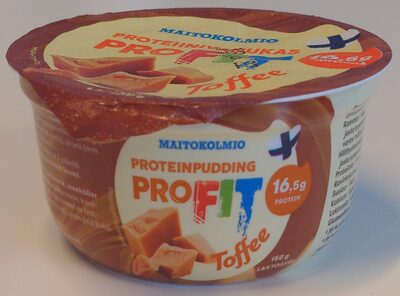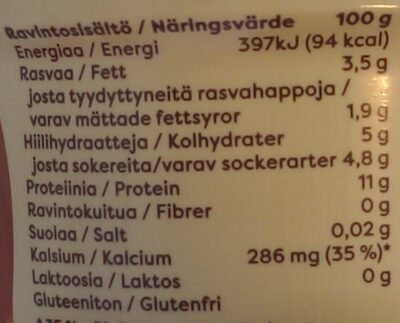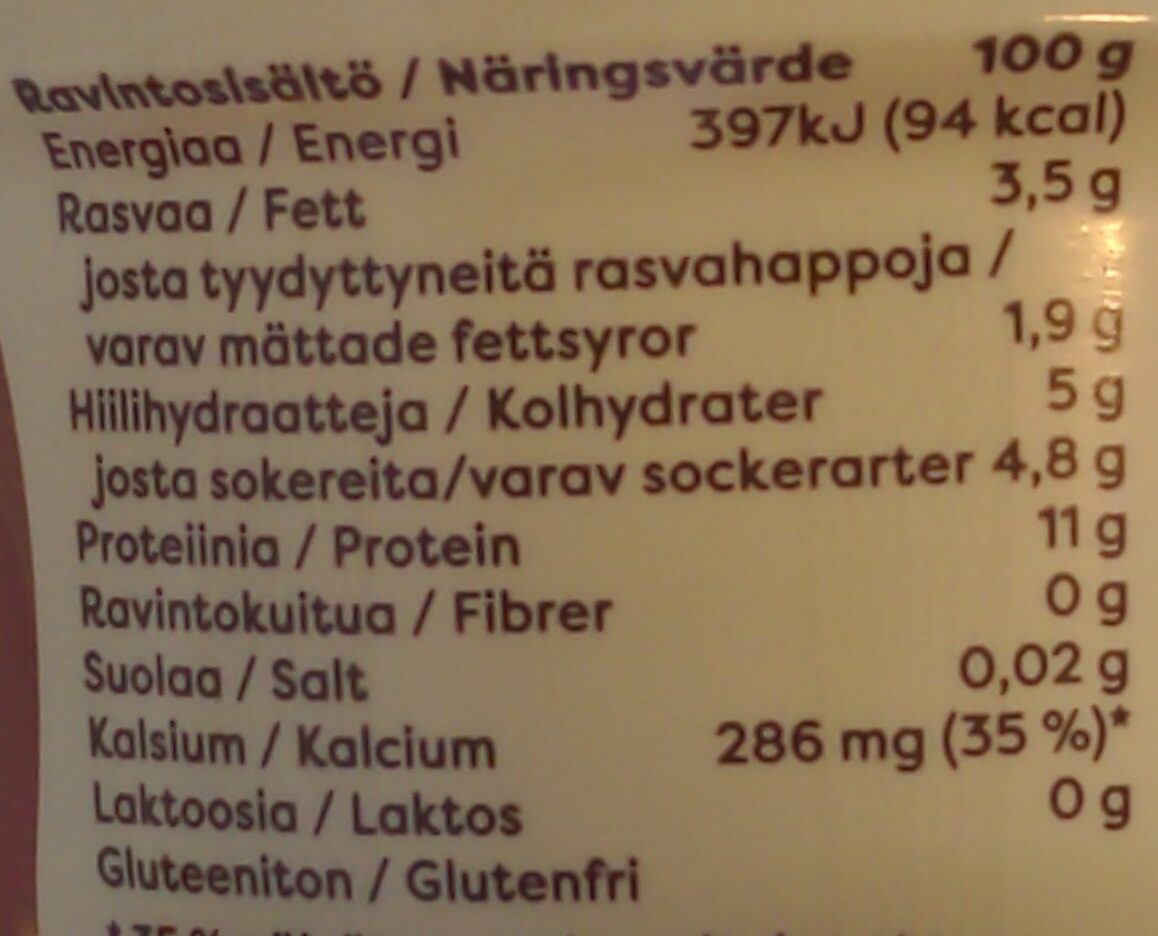Proteinpudding profit toffee -
This product page is not complete. You can help to complete it by editing it and adding more data from the photos we have, or by taking more photos using the app for Android or iPhone/iPad. Thank you!
×
Barcode: 6417777051021 (EAN / EAN-13)
Common name: Toffeenmakuinen proteiinivanukas 150g. Laktoositon, runsasproteiining sisältää makeutusainetta.
Categories: Dairies, Desserts, Dairy desserts, Creamy puddings, Caramel creamy puddings
Traceability code: FI 60319 EY
Countries where sold: Finland
Matching with your preferences
Environment
Packaging
Transportation
Report a problem
Data sources
Product added on by mvainola
Last edit of product page on by moon-rabbit.
If the data is incomplete or incorrect, you can complete or correct it by editing this page.










